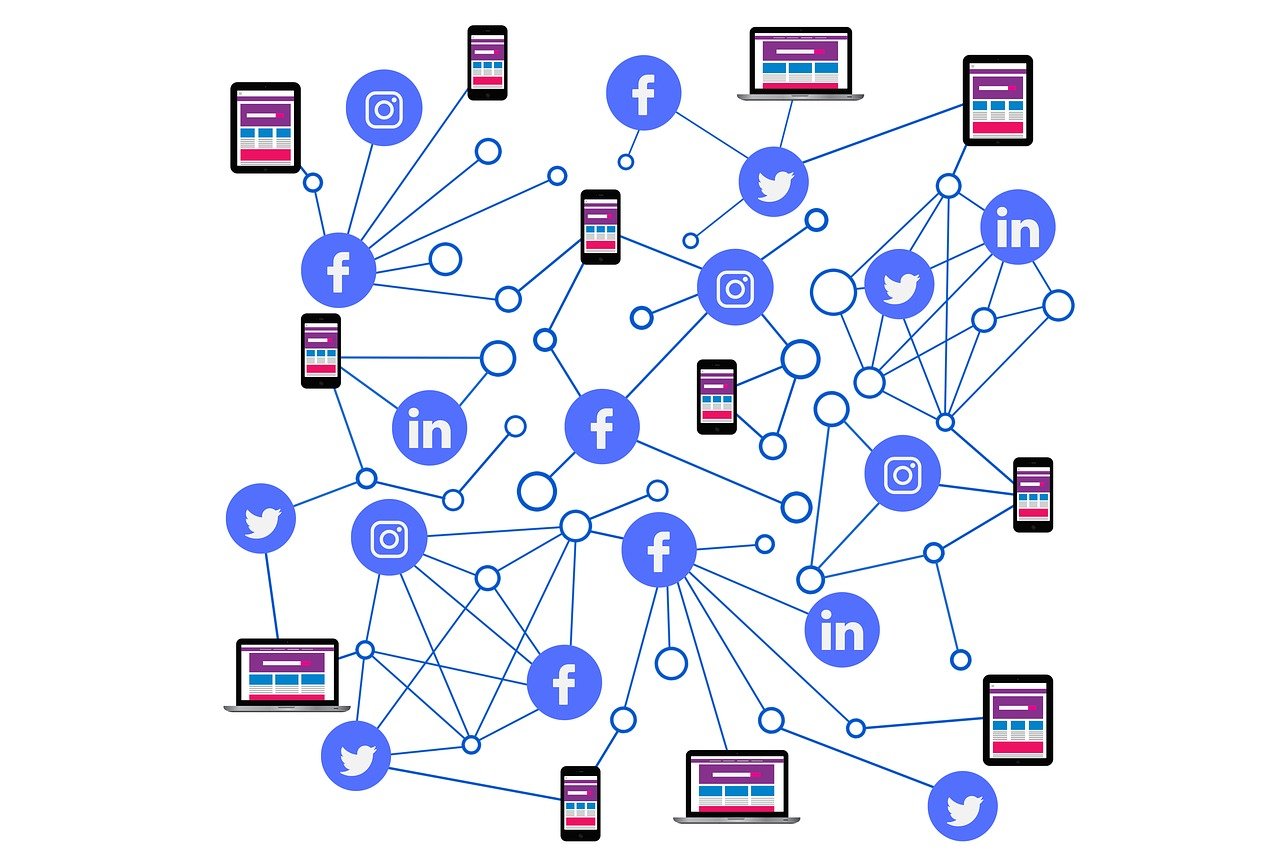Blog
Mastering LinkedIn Skills: How to Choose the Best Skills for Career Growth
Introduction
Mastering LinkedIn skills is crucial for career growth and professional development. LinkedIn has evolved into a powerful platform where your skills can significantly impact job opportunities and professional success.
1. Conducting a Self-Assessment
Understanding your interests and values is crucial for selecting the right skills on LinkedIn. This process begins with self-reflection. Consider what subjects excite you, whether you prefer manual or mental tasks, and what success means to you. These reflections help pinpoint the skills that not only align with your career goals but also resonate with your personal passions.
Techniques for Conducting a Self-Assessment:
- Personality Tests: Tools like the Myers-Briggs Type Indicator (MBTI) or CliftonStrengths can provide insights into your personality traits and strengths.
- Reflection Exercises: Journaling about past experiences, achievements, and challenges can reveal patterns in your interests and abilities.
- Feedback from Others: Asking colleagues or mentors for feedback on what they perceive as your strengths can offer a different perspective.
Identifying personal strengths that align with your career aspirations is essential. For instance, if you aspire to a leadership role, you might focus on developing skills like strategic thinking and team management. If you’re passionate about technology, honing hard skills such as coding or data analysis could be beneficial.
By conducting a thorough self-assessment, you ensure that the skills you highlight on LinkedIn are not only relevant to potential employers but also true to who you are. This alignment makes it easier to pursue opportunities that lead to long-term satisfaction and success.
2. Defining Clear Career Goals
Setting well-defined career goals is crucial for guiding your skill selection on LinkedIn. Knowing where you want to be in the next 5-10 years helps you focus on acquiring the skills that will facilitate your progress towards those aspirations.
Steps to Visualize Your Professional Future
- Identify Long-Term Goals: Consider what positions or titles you aim for in your career. Are you targeting a managerial role, a specialized expert position, or perhaps an entrepreneurial path?
- Envision Industry Focus: Determine which industries align with your interests and values. Whether it’s technology, healthcare, finance, or another sector, knowing your industry focus can help narrow down relevant skills.
- Set Milestones: Break your career goals into smaller, achievable milestones. This could include gaining certain certifications, completing specific projects, or assuming roles that build towards your ultimate goal.
Aligning Skills with Desired Roles and Industries
When your career goals are clear, you can pinpoint the skills that will get you there. For example:
- If aiming for a project management role, prioritize skills like Agile methodologies, risk management, and team leadership.
- For a future in data science, focus on machine learning, statistical analysis, and proficiency in tools like Python.
Knowing both hard and soft skills required in your desired roles ensures a balanced approach to professional development. However, sometimes the journey doesn’t go as planned and you may need to consider navigating career transitions by reshaping your resume for a new path.
3. Analyzing Market Demand for Skills

Understanding job market trends is crucial in identifying the skills that will bolster your career growth. Researching current market demands for specific skills can be done effectively through various methods.
Research Techniques:
- Job Postings: Regularly scan job boards and company career pages. Pay attention to the required and preferred skills listed in job descriptions for roles you aspire to.
- Industry Reports: Access reports from trusted sources like Deloitte, McKinsey, or industry-specific publications to understand emerging trends and in-demand skills.
- LinkedIn Insights: Utilize LinkedIn’s features such as the “Jobs” section and “Skills & Endorsements” data. This platform often highlights trending skills based on employer searches and job postings, providing real-time insights into what employers are seeking.
Identifying In-Demand Skills:
LinkedIn provides a wealth of data that can guide your skill development strategy:
- Trending Skills: Regularly check LinkedIn’s list of top trending skills which are updated annually. These lists reflect the competencies most frequently sought by recruiters.
- Industry-Specific Searches: Use LinkedIn’s advanced search filters to explore specific industries or geographic locations. This helps pinpoint which skills are currently valued in your target sectors.
By staying informed about employer needs and market demand, you can strategically select and develop skills that align with both your career goals and the evolving job landscape.
4. Balancing Soft and Hard Skills in Your Profile
Soft skills and hard skills are both crucial for creating a well-rounded LinkedIn profile that appeals to recruiters.
Understanding Soft and Hard Skills
Soft Skills: These are often interpersonal or emotional abilities such as communication, teamwork, problem-solving, and leadership. For example, in a management role, soft skills like conflict resolution and motivational speaking are fundamental.
Hard Skills: These are specific, teachable abilities or knowledge sets like programming, data analysis, project management, and technical writing. For instance, a software developer might highlight proficiency in languages like Python or Java.
The Importance of Balance
Having a balanced skill set means showcasing both types of skills to demonstrate versatility. Recruiters value candidates who can not only execute technical tasks but also collaborate effectively within teams. This skill diversity makes your profile more attractive by showing you can adapt to various situations and roles. Highlighting an array of both soft and hard skills signals that you’re a comprehensive candidate ready to tackle diverse challenges.
Showcasing Your Skills
To effectively showcase this balance in your profile, consider using resources like those available at NimoHR, which provide valuable insights into building a strong resume that highlights both soft and hard skills.
5. Exploring Learning Opportunities on LinkedIn Learning and Beyond
Using online learning resources can greatly enhance your LinkedIn profile. LinkedIn Learning provides a vast selection of courses on various subjects, including technical skills like programming and data analysis, as well as soft skills such as leadership and effective communication.
Key Resources for Skill Development
Here are some valuable resources available on LinkedIn Learning and other platforms that can help you develop your skills:
- LinkedIn Learning Courses: Access thousands of courses taught by industry experts covering a wide range of topics relevant to different career paths.
- Specialized Certifications: Many courses offer certifications upon completion, which can be added to your LinkedIn profile to showcase your dedication to professional growth.
- Skill Assessments: Validate your proficiency in specific areas through LinkedIn’s skill assessments. Successfully passing these assessments can earn you badges that enhance your credibility.
Benefits of Engaging in Online Courses
Investing time in online courses has several advantages:
- Enhanced Profile Visibility: Certifications and completed courses provide tangible proof of your expertise, making your profile more attractive to recruiters.
- Up-to-Date Knowledge: Continuous learning ensures you stay current with industry trends and technologies.
- Networking Opportunities: Many courses include forums and discussion groups where you can connect with peers and instructors, expanding your professional network.
Exploring these learning opportunities helps you build a robust skill set, positioning you as a competitive candidate in the job market.
6. Leveraging Professional Networking for Skill Insights
Professional networking plays a crucial role in identifying valuable skills that may not be immediately apparent from job descriptions alone. Engaging with industry professionals can provide you with a deeper understanding of the competencies required for various roles and help you stay ahead in your career.
How to Conduct Informational Interviews
Informational interviews are an effective way to gain insights into essential skills directly from those in your desired field. Here’s how to approach them:
- Identify Key Contacts: Use LinkedIn to find professionals working in roles or industries you aspire to join.
- Reach Out: Send a personalized message requesting a brief conversation about their career journey and the skills they consider vital.
- Prepare Questions: Focus on asking about:
- The most important skills for their role
- Emerging trends in their industry
- Advice on how to develop those skills
- Follow Up: After the interview, express gratitude and keep in touch for future networking opportunities.
Networking can reveal hidden skill requirements and provide guidance on which competencies will set you apart professionally. This proactive approach ensures that you continuously align your skill set with market demands, making your LinkedIn profile more attractive to recruiters.
7. Encouraging Skill Endorsements on Your LinkedIn Profile
Skill endorsements from colleagues and peers play a crucial role in building credibility and increasing visibility on LinkedIn. When recruiters see endorsed skills, it adds a layer of validation to your profile, making you stand out.
Here are practical steps to encourage endorsements:
- Reciprocate Endorsements: Start by endorsing the skills of your connections. People are more likely to return the favor when they see your support.
- Ask Directly: Don’t hesitate to ask colleagues for endorsements. Be specific about which skills you’d like them to endorse.
- Highlight Achievements: Share posts or updates that showcase your expertise. This not only reinforces your skills but also reminds your network of your capabilities.
- Engage Actively: Regular interaction with your network increases the likelihood of receiving endorsements. Comment on posts, share industry insights, and participate in discussions.
By strategically managing skill endorsements, you boost your profile’s attractiveness to potential employers, facilitating career growth.
Latest Posts
- Crafting a Future-Ready Resume: Top Tips for 2025 by NimoHR
- How to Craft Cover Letters That Get Noticed in 2025: Effective Strategies
- How to Write Engaging LinkedIn Articles That Build Your Brand
- How to Perfectly Align Your LinkedIn Profile with Your Resume
- How to Update Your Resume for 2025: Expert Tips from NimoHR
- Expert Resume Formatting Tips to Beat Applicant Tracking Systems (ATS)
- Industry-Specific CV Writing: Why One-Size-Fits-All Doesn’t Work
- How a Professionally Written CV Can Speed Up Your Job Search
- Why LinkedIn Profile Optimization is the Secret to Standing Out in a Competitive Job Market
- How a LinkedIn Profile Writer Can Transform Your Online Presence
- Enhancing Your Job Application: The Value of a Cover Letter Review Service
- Common Mistakes in Cover Letters and How Professional Services Can Help
- Overcoming Common Interview Challenges: Gaps in Employment and Career Transitions
- The Role of Non-Verbal Communication in Job Interviews
- Mastering the Salary Conversation: Essential Strategies for Effective Negotiation
- Choosing Between Quitting and Getting Fired: What’s Best for Your Career?
- 5 Proven Strategies to Send LinkedIn Invitations That Get Accepted
- Crafting the Perfect Cover Letter for an Internal Position: A Step-by-Step Guide
- Did You Know? Your Resume Reference Page Could Make or Break Your Job Application
- Crafting a Layoff Notice: Effective Communication During Work Shortages
- Mastering Behavioral Interview Questions: Tips and Examples
- In-Demand Skills for 2024: What to Include on Your Resume
- Navigating Career Transitions: Reshaping Your Resume for a New Path
- How to Optimize Your LinkedIn Profile
- Cracking the Job Interview: Insights from NimoHR’s Interview Preparation Sessions
- Using LinkedIn Articles to Showcase Your Expertise
- Creating a Standout Resume for Phoenix Employers: Tips on crafting a resume tailored to the preferences of local Phoenix employers
- Resume Trends for 2024: What You Need to Know
- From First Impression to Final Question: Excelling at the Four Key Interview Evaluation Points
- Behind the Screens: Understanding the Role of ATS in the Hiring Process
- How to Create the Perfect Executive LinkedIn Profile?
- How to Write a Cover Letter That Gets You the Job You Want
- How To Build A Resume
- Get Professionally Written Resumes And LinkedIn Profiles
- Top 5 Reasons To Avail Of LinkedIn Resume Writing Services
- Helpful Tips For Writing A Perfect Cover Letter
- How to Ace Your Next Interview
- 15 Things To Leave Off Your Resume
- Applying Strategically and Networking
- Effective Interview Strategies
- The Best Job-Board Sites
- 4 Simple Signs That You Should Quit Your Job
- The most common interview questions & the best way to answer them
- How to beat those pesky Applicant Tracking Systems
- Jump-start your career during the COVID-19 crisis
- Questions to ask in an interview
- Career consulting ROI. Why you should purchase a professional resume writing services
- The Importance of a Company Culture and HR’s Role
- Why companies should offer outplacement services and career coaching
- Interview Tips: Back to the Basics
Categories
Related Posts

Crafting a Future-Ready Resume: Top Tips for 2025 by NimoHR
In today’s competitive job market, having a resume that stands out is more crucial than ever. As we step into 2025, the expectations of hiring managers and the functionalities of Applicant Tracking Systems (ATS) have evolved. With more recruiters relying on technology to sift through resumes, a traditional resume may no longer suffice. A modern… Continue reading Crafting a Future-Ready Resume: Top Tips for 2025 by NimoHR
Read More
How to Craft Cover Letters That Get Noticed in 2025: Effective Strategies
In today’s job market, a well-written resume alone isn’t enough to set you apart. To truly impress hiring managers, your cover letter must shine as well. A cover letter is your opportunity to showcase your personality, passion, and qualifications in a way that a resume cannot. At NimoHR, we specialize in effective cover letter strategies… Continue reading How to Craft Cover Letters That Get Noticed in 2025: Effective Strategies
Read More
How to Write Engaging LinkedIn Articles That Build Your Brand
LinkedIn is more than a networking platform—it’s a place to share insights, build authority, and grow your personal brand. Knowing how to write engaging LinkedIn articles can amplify your voice, attract job opportunities, and establish you as an industry thought leader. Whether you’re working with a LinkedIn profile optimization service or looking to boost your… Continue reading How to Write Engaging LinkedIn Articles That Build Your Brand
Read More